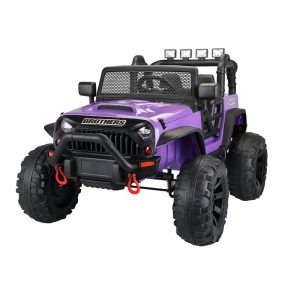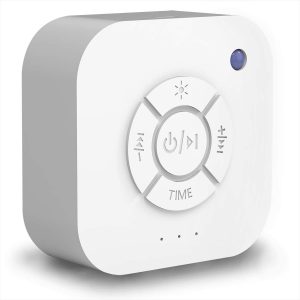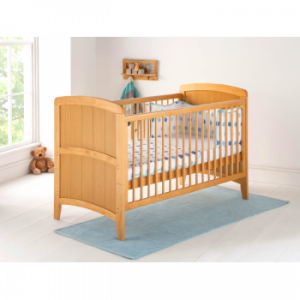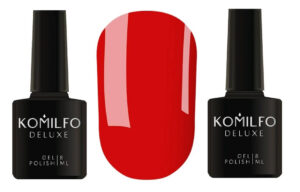What do you need to know about shopping for infants of all sizes? Baby Clothing Sizes, Explained
7 min read
What do you need to know about shopping for infants of all sizes? Baby Clothing Sizes, Explained
Last Updated on August 31, 2021 by Jonathan Lopez
Experts advice on navigating the perplexing world of baby clothes sizes and size charts.
Although it shouldn’t be, buying baby clothes and dresses can be complicated, especially if you have no prior experience with them. (“Can newborns dress in 0-3 sizes?”) “And why isn’t newborn-size the same thing?” Even more perplexing is the fact that, like the garments themselves, there is no one-size-fits-all guideline for determining which clothes from which brands will suit your baby at when time.
Jenn Bonnett, a fashion and wardrobe stylist who usually deals with children, says, “It’s impossible to establish hard and fast rules when it comes to baby apparel sizes, especially when brands all size and label things a bit differently.” “Moreover, regardless of age, all children have various sizes, therefore it’s vital to remember that the sizes we observe are averages. You’ll need to size up if your baby is in the 99th percentile.”
Even if there is no uniform reference for baby clothing sizes, there are some general guidelines that will make onesie shopping more enjoyable than frustrating. Experts decode the perplexing world of baby apparel sizes.
Is a newborn the same size as a child aged 0 to 3 months?
Dr. Amna Husain, a pediatrician at Pure Direct Pediatrics in Marlboro Township, New Jersey, states, “Newborn-size represents an average infant at birth up to 21.5 inches long and 5-8 pounds, which can be a very wide range.” According to Husain, the weight range for 0-3 month clothing is normally 8-13 pounds, but there are other factors to consider, including length.
“Infants come in many shapes and sizes, so the range is useful if you have a smaller/petite newborn vs a larger/longer infant,” Husain explains. “Because some brands run small and others large, I’ve found that arranging garments by length rather than what the tag says might be helpful.”
How long can a baby wear newborn clothing?
Newborn clothes, or something a little bigger with some space to grow, such as 0-3 months, are most likely the way to go, whether you’re looking for a coming-home outfit for your own little one or something nice for a loved one’s new baby or clothing for twins. Which one is the most likely to fit right away? It all boils down to the size of the baby, which is practically impossible to anticipate before delivery.
“For your newborn, I recommend having a variety of sizes on hand, including newborn and 0-3 months,” Husain advises.
While babies are notorious for their capacity to grow — and outgrow garments — at breakneck speed, Husain points out that not everyone will be packing up their newborn-size clothes in a week or two. If your child is closer to the 4-5 pound range, Husain recommends wearing newborn apparel for 4-6 weeks. “While each baby is unique, it’s a good idea for parents to remove the tags and wash a few — not all — newborn garments before giving birth. This way, they can be returned if the infant grows out of them quickly.”
If you’re shopping for a newborn or a baby shower gift at Twins Plus Arabia the number one prolific ghostwriting online, think along the same lines. Because NB-size clothing may not fit for long — and some larger babies may never have a chance to wear it — it’s safest to buy a size or two above for newborns.
Sizes of baby clothes explained:
Just as caring for a baby becomes easier with practice, so does deciphering the DaVinci-like code of baby clothes shopping. Not only will it be clearer which end of the height and weight spectrum your child belongs to, but you’ll also gain a better understanding of how popular companies operate.
“While a lot of it depends on the brand, my personal guideline is to assume the labeling says ‘up to,’” Husain adds. “So if a label reads ‘3 months,’ I see it fitting somewhere between 0-3 months, and if it says ‘6 months,’ I imagine it fitting somewhere between 3-6 months.” While this rule may not apply to every article of clothing or every brand, Husain points out that it will make shopping easier until parents have a better sense of their baby’s shape and brand preferences.
Here’s an example:
The 3-6-month size range from Baby Gap fits babies weighing 12-17 pounds and measuring 23-27 inches, whereas Carter’s 3-month clothing fits babies weighing 9-12.5 pounds and measuring 21.5-24 inches, and their 6-month clothing fits babies weighing 12.5-17 pounds and measuring 24-27 inches. In newborns, the difference between 9 and 12 pounds might be significant.
In addition to having a few NB pieces on hand before the baby’s arrival, it’s usually a good idea to size up when you don’t know the baby’s precise size. When shopping for clothes for a 3-month-old, for example, go for the 3-6 month (or greater) size range rather than the 0-3 month range.
There are a couple more compelling reasons for the size-up rule. Clothes may shrink over time in the washer, but babies will continue to grow.
“My son was outgrowing his clothes, so in a hurry one day, I got a couple of Cat & Jack rompers from Target in what I believed was his size,” Mae Diaz, a mother of three from Howell, New Jersey, explains. “They were really big on him in the end. They did, however, fit after a few weeks and numerous washing. In fact, they shrank so much that my next kid could wear them a little earlier.”
Sheryl Angeles, a mother of two from Dubai, went through a similar ordeal with her first child. Angeles recalls, “I was eager to utilize a gift card for Baby Gap because she lived in basic Gerber onesies for the first few months of her life.”“In 3-6 months, I ordered a bunch of rompers and onesies online, and they were gigantic! She eventually outgrew them, but when my daughter was 3-4 months old, she was swimming in them.”
“Not only will children’s garments shrink the more you wash and dry them,” Bonnett says, “but kids really look charming in large sweatshirts or sweaters with the sleeves rolled up — plus they get extra length and wear out of them that way.”
So, what’s the moral of the story? It’s a good idea to look to a brand’s size chart if you’re still figuring out what sizes fit your baby best, or if you’re attempting to buy a present for someone else because there’s always a difference. When in doubt, size up, keeping in mind that your baby can grow into a larger size.
We’ve produced a list of some of the most popular baby brands and sizes to assist you.
Size chart for baby clothing by brand:
Amazon Essentials:
Label/Size Weight (lbs) Height/Length (inches)
P (Preemie) Up to 6 lbs Up to 17″
NB (Newborn ) 6-9 lbs Up to 21.5″
3 months 9-12.5 lbs 21.5-24″
6 months 12.5-17 lbs 24-26.5″
9 months 17-21 lbs 26.5-28.5″
12 months 21-25 lbs 28.5-30.5″
18 months 25-28 lbs 30.5-32.5″
24 months 28-30 lbs 32.5-34″
Carter’s/OshKosh:
Label/Size Weight (lbs) Height/Length (inches)
P (Preemie) Up to 6 lbs Up to 18″
NB (Newborn) 6-9 lbs 18-21.5″
3 months 9-12.5 lbs 21.5-24″
6 months 12.5-17 lbs 24-27″
9 months 17-21 lbs 27-28.5″
12 months 21-25 lbs 28.5-30″
18 months 25-28 lbs 30-32″
24 months 28-30 lbs 32-34″
Gerber:
Label/Size Weight (lbs) Height/Length (inches)
Preemie Up to 5 lbs Up to 17″
Newborn (NB) 5-8 Ibs 17-21″
0-3 months 8-12 Ibs 21-24″
0-6 months Up to 16 Ibs 17-26″
3-6 months 12-16 Ibs 24-26″
6-9 months 16-20 Ibs 26-28″
12 months 20-24 Ibs 28-30″
18 months 24-28 Ibs 30-32″
24 months/2T 28-32 Ibs 32-34″
Old Navy & Baby Gap:
Label/Size Weight (lbs) Height/Length (inches)
Up to 7 lbs Up to 7 lbs Up to 18″
0-3 months 7-12 lbs Old Navy 19-23″
Baby Gap 18-23″
3-6 months 12-17 lbs 23-27″
6-9 months Old Navy 17-19 lbs
Baby Gap 17-20 lbs 27-28″
6-12 months Old Navy 17-22 lbs
Baby Gap 20-22 lbs Old Navy 27-29″
Baby Gap 28-29″
12-18 months 22-27 lbs 29-31″
18-24 months 27-30 lbs 31-33″
* As of the time of this publishing, according to sizing charts on brand websites.
What is the difference between a 2T and a 24-month-old?
If you’re wondering what the difference is between 24 months and 2T in terms of baby apparel, the answer is very straightforward: it’s mostly about fashion and whether or not a child is potty-trained.
“The design is the most significant difference between size 24 months and 2T,” says Jessica Herman, head of the customer experience at KIDBOX, a children’s clothes subscription business. “Typically, size 2T is more mature toddler fashions, whereas size 24 months offers more babyish items, such as onesies, intended for children who are still in diapers.”
To put it another way, it’s far easier for a child or parent to pull up and down a pair of pants than it is to unsnap a onesie when it’s time to go potty. Some brands, such as Baby Gap, even state that their sizes are typical of clothing with a diaper on top of accommodating extra room in their clothing for a diaper.
While it would be ideal if infant sizes were as simple as reading a label, few things in parenthood are that straightforward. It’s simple once you discover out what works best for your child. But, until that time comes, it’s better to be safe than sorry. ”Size up whenever you’re unsure about sizing,” Herman advises. “Kids develop at a rapid pace, and it is preferable to be too big than too small.”
Visit the online shop of Twins Plus Arabia if you want to buy Kids’ clothes, dresses, and all other needs for your babies.






